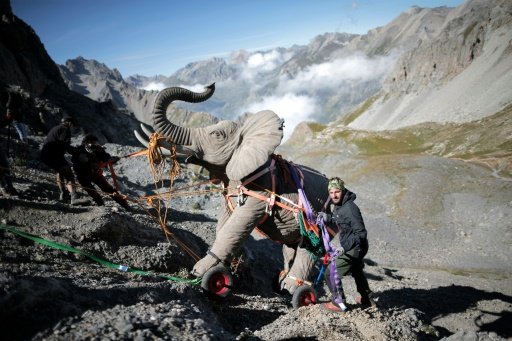
AFP/File | Volunteers recreate Hannibal’s epic campaign in 218 BC on the Cavalla Pass, in the Maira Valley, near Cuneo and the French border, on August 21, 2014
LONDON: The route taken by Hannibal over the Alps to invade Italy has been a matter of debate for 2,000 years, but scientists may now have the answer — thanks to some ancient horse poo.
More than 15,000 horses and 37 elephants accompanied the 30,000-strong Carthaginian army in a march on the Roman Republic in 218 BC, which sparked years of bloody conflict.
Dragging so many men and animals across the Alps was no easy task and historians and classicists have long argued over the exact route Hannibal took.
“Now it looks like we may just have cracked it ?- all thanks to modern science and a bit of ancient horse poo,” said Chris Allen, a microbiologist at Queen’s University Belfast.
Allen was part of an international team led by Bill Mahaney of York University in Toronto, which uncovered evidence of a mass deposit of animal dung at a narrow mountain pass near the France-Italy border.
Located on one of the more treacherous routes that Hannibal is considered to have taken, it is thought the site at the Col de la Traversette could have been used for watering large numbers of animals.
Carbon isotope analysis dates the deposits to around 200 BC, while the team also found significant evidence of Clostridia microbes, which are commonly found in horse manure.
“This may be the first tangible, if unusual, evidence of human/animal activity at the time of Hannibal’s invasion of Italia,” the scientists wrote in the journal Archaeometry.
“Although we cannot determine conclusively that the evidence pertains to Hannibal, the results are consistent with the passage of large numbers of animals and people,” they added.
They said more research was needed into the site, and held out hope that it could yield artefacts such as coins, belt buckles and daggers that would confirm Hannibal’s presence.
